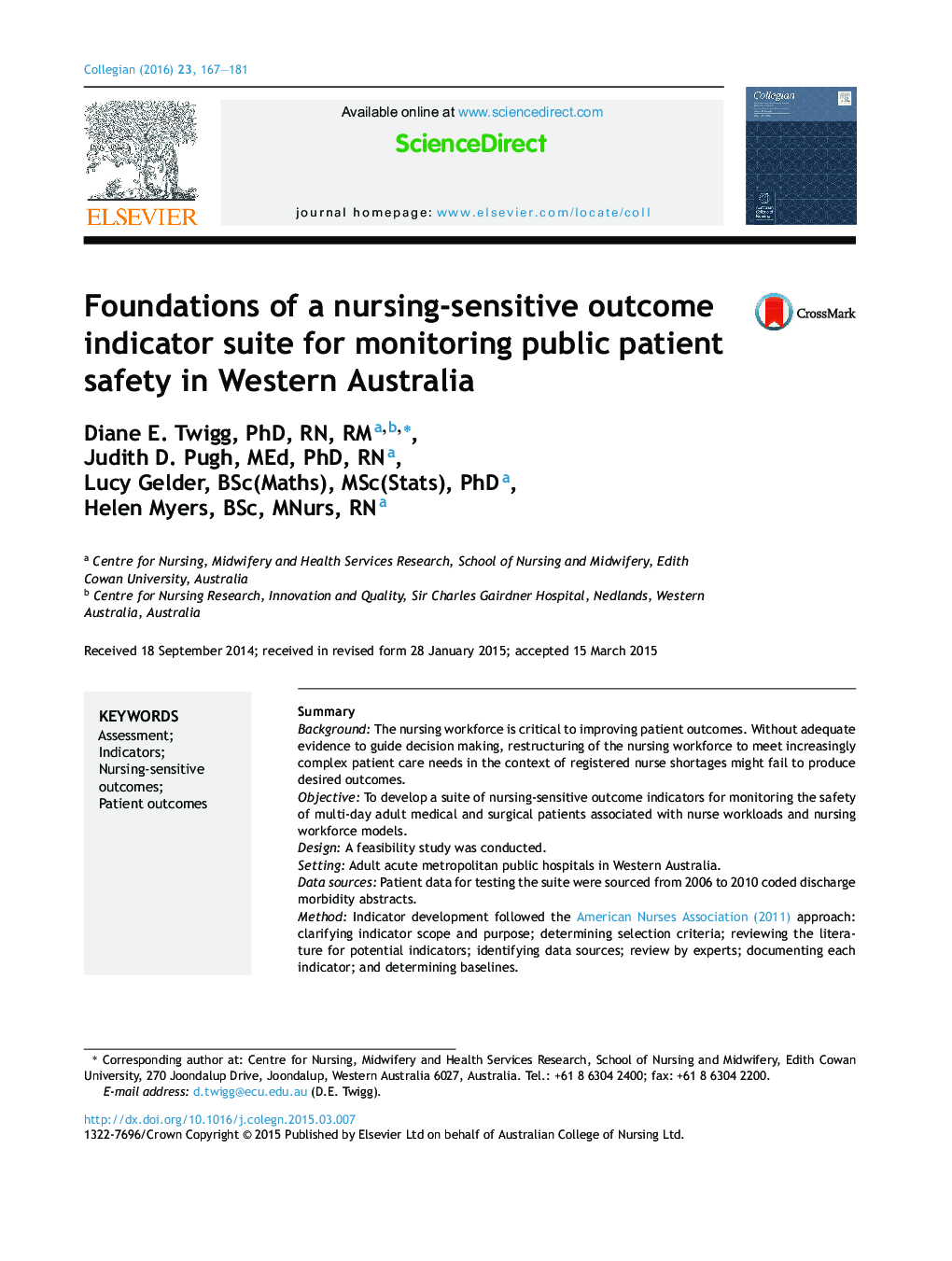| Article ID | Journal | Published Year | Pages | File Type |
|---|---|---|---|---|
| 2646071 | Collegian | 2016 | 15 Pages |
SummaryBackgroundThe nursing workforce is critical to improving patient outcomes. Without adequate evidence to guide decision making, restructuring of the nursing workforce to meet increasingly complex patient care needs in the context of registered nurse shortages might fail to produce desired outcomes.ObjectiveTo develop a suite of nursing-sensitive outcome indicators for monitoring the safety of multi-day adult medical and surgical patients associated with nurse workloads and nursing workforce models.DesignA feasibility study was conducted.SettingAdult acute metropolitan public hospitals in Western Australia.Data sourcesPatient data for testing the suite were sourced from 2006 to 2010 coded discharge morbidity abstracts.MethodIndicator development followed the American Nurses Association (2011) approach: clarifying indicator scope and purpose; determining selection criteria; reviewing the literature for potential indicators; identifying data sources; review by experts; documenting each indicator; and determining baselines.ResultsThe proposed suite comprises 9 indicators pertaining to medical and surgical patients: failure-to-rescue; in-hospital 30-day mortality; average length of stay; hospital-acquired urinary tract infections, sepsis, pneumonia and pressure injuries; falls with injury occurring in hospital; nurse staffing levels (comprising skill mix and nursing care hours per patient day).ConclusionsSufficiently robust administrative data is available to calculate retrospective monthly and annual rates of nursing-sensitive outcomes at unit level and further analysed by ward category for metropolitan patients. Further work is required to pilot test the suite and develop processes for reporting to the Department of Health and hospitals on the impact of nurse staffing and care delivery models on patient outcomes.
